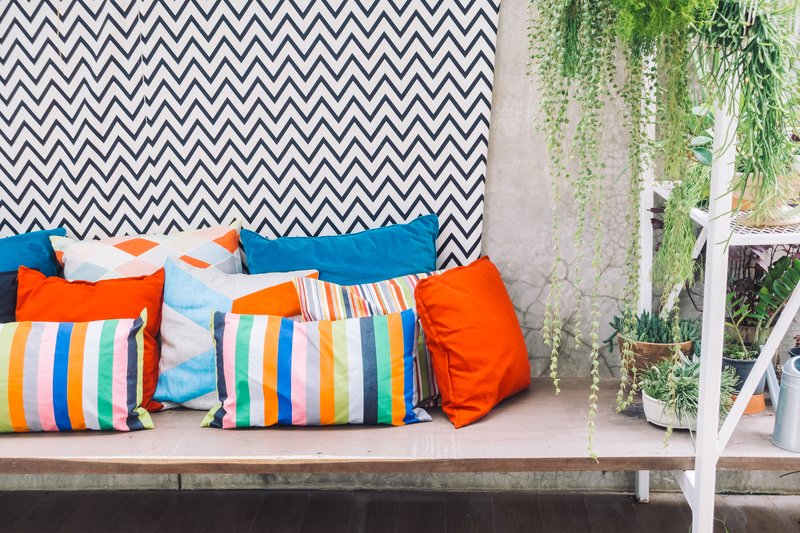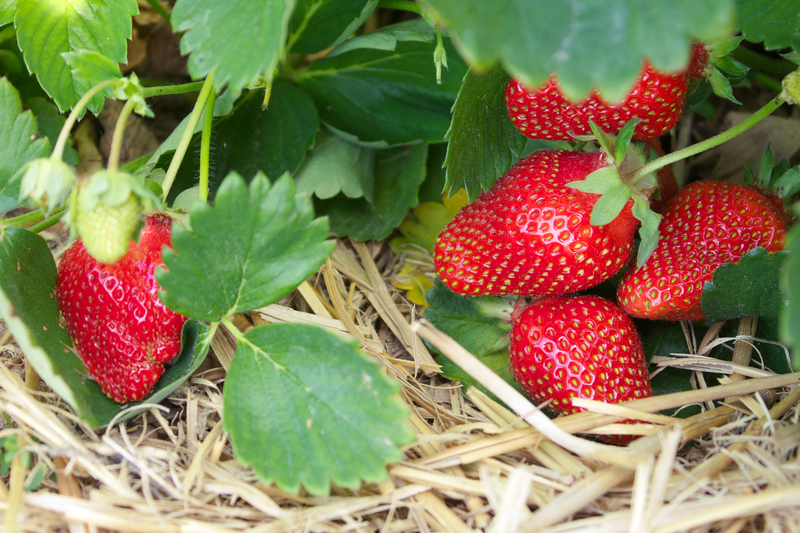Affordable Green Spaces: 5 Minimal Upkeep Garden Designs
Posted on 05/06/2025
Affordable Green Spaces: 5 Minimal Upkeep Garden Designs
Looking to transform your outdoor environment into a lush oasis without breaking the bank or spending hours on maintenance every week? Creating an affordable green space is easier than you might think. With the right planning and garden design choices, you can enjoy a vibrant, beautiful, and relaxing yard that's low on costs and minimal on maintenance. In this article, discover 5 inspiring, easy-care designs for affordable gardens that let you spend more time enjoying your outdoor retreat and less time laboring over it.

Why Choose Minimal Upkeep Garden Designs?
Many homeowners and renters dream of having access to a beautiful garden, but the perception of high costs, constant pruning, watering, and fertilizing often holds them back. Low-maintenance garden designs not only address these concerns but also promote sustainability, affordability, and accessibility. By focusing on drought-tolerant plants, smart layouts, and budget-friendly materials, these designs offer:
- Reduced water use
- Lower maintenance and labor
- Cost-effective landscaping
- Environmental benefits
- Year-round enjoyment
Let's explore the top five minimal upkeep and affordable green space designs that are perfect for beginner gardeners, busy professionals, or anyone seeking an eco-friendly sanctuary.
1. Xeriscape Gardens: Beauty Without Thirst
What is Xeriscaping?
Xeriscaping is a landscaping technique that reduces or eliminates the need for supplemental watering. By using a selection of drought-tolerant, native plants and minimizing grassy lawns, you create a vibrant, water-wise garden that thrives on natural rainfall.
Why Choose Xeriscape for Your Budget Garden?
- Reduces water bills significantly.
- Requires little to no mowing.
- Less weeding and fertilizing needed.
- Promotes biodiversity with native species.
Key Elements of Xeriscape Garden Design:
- Use of mulch: Keeps soil moist and suppresses weeds.
- Gravel or stone pathways reduce maintenance and enhance aesthetics.
- Low-water plants: Think lavender, yucca, sedum, and ornamental grasses.
- Smart zoning: Group plants with similar water needs together.
Tip: Visit local plant nurseries for deals on native plants best suited to your region's climate. Some cities even offer rebates for switching to xeriscaping!
2. Container Gardens: Flexible, Compact, and Effortless
The Versatility of Container Gardening
If your space is limited or you crave a flexible, low-cost gardening solution, container gardens are one of the most popular affordable green spaces for homes, balconies, patios, and small yards.
Benefits of Container Gardens
- Minimal weeding and pests.
- Portable; easily rearrange to refresh your space.
- Concentrated watering reduces waste.
- Perfect for renters or beginners.
Tips for a Low-Upkeep Container Garden
- Use self-watering planters to minimize drought stress.
- Mix perennials with annuals for year-round color and easier replanting.
- Select compact, hardy plants like succulents, herbs, hostas, and small evergreens.
- Fertilize sparingly--choose slow-release formulas for ease.
Container gardening requires little initial investment--repurpose old buckets, crates, or unused pots for ultimate affordability!
3. Groundcover Lawns: Say Goodbye to Mowing
Rethink the Traditional Lawn
Traditional grass lawns demand frequent mowing, fertilizing, watering, and are often expensive and environmentally taxing. Switch things up with groundcover alternatives that form lush, green carpets--no mowing needed.
Popular Groundcover Plants
- Creeping thyme: Fragrant, drought-tolerant, and blooms with purple flowers.
- Clover: Requires little water or fertilization and attracts pollinators.
- Moss: Ideal for shady, moist areas--soft, green, and serene.
- Liriope or mondo grass: Low-growing, low-maintenance, elegant grassy look.
Why Choose a Groundcover Lawn?
- Virtually no mowing.
- Drought-tolerant options available.
- Reduces the need for pesticides and fertilizers.
- Superior erosion control on slopes and uneven ground.
Cost-saving tip: Many groundcovers can be propagated by division--buy a few and multiply them over time for a full, lush look without high costs.
4. Gravel and Rock Gardens: Modern, Clean, and Sustainable
The Allure of Rock and Gravel Gardens
Rock gardens, also known as alpine gardens, make for some of the most affordable and minimal upkeep garden designs. Gravel and rocks provide excellent drainage and a clean, contemporary aesthetic while minimizing plant care.
Elements of a Rock Garden Design
- Layered gravel beds for texture.
- Feature boulders or rock sculptures for interest.
- Clusters of drought-tolerant succulents and alpine plants.
- Paved paths or stepping stones for access and structure.
Low Maintenance, High Impact
- Virtually no watering or fertilizing required.
- No lawn mowing; minimal weeding due to mulch and gravel.
- Year-round architectural beauty.
- Ideal for sloping, poor, or sandy soils where other gardens struggle.
Pro tip: Source rocks and gravel locally to reduce costs and environmental impact. Many municipalities offer free or affordable mulch and stone resources for residents.
5. Native Plant Gardens: Natural Beauty, Minimal Resources
Why Native Plants?
Using native plants is one of the smartest ways to develop a low-maintenance green space on a budget. Native species are adapted to local weather, pests, and soil, ensuring they require less water, fertilizer, and care.
Planning Your Native Garden
- Research local species at your extension office or native plant society.
- Group plants by sun and soil needs for optimal growth.
- Embrace natural diversity; include flowers, grasses, shrubs, and trees.
- Leave space for wildlife--birds, bees, and butterflies will thrive.
Native Gardens are:
- Self-sustaining once established.
- Resistant to local pests and diseases.
- Supporting local ecology and pollinator populations.
- Affordable: native seeds and plants are often inexpensive or available at swaps and sales.
Did you know? Studies have shown that native plant gardens can save hundreds of gallons of water and reduce annual maintenance hours dramatically compared to traditional landscapes.

Additional Tips for Affordable, Easy-Care Green Spaces
Smart Design Choices
- Plan for your climate: Focus on plants adapted to your weather to reduce failures and replacements.
- Shade and shelter: Use trees and shrubs to block sun and wind, reducing evaporation and maintenance.
- Choose perennial plants: Perennials return yearly, requiring less investment and labor than annuals.
Use Recycled and Natural Materials
- Mulch with fallen leaves or wood chips to enrich soil for free.
- Scavenge bricks, logs, and rocks for paths and borders.
- Upcycle containers rather than buying new planters.
Low-Maintenance Garden Features
- Install a soaker hose or drip irrigation--saves water and time.
- Add a bench or small patio area for maximum enjoyment with minimal upkeep.
- Leave areas wild for birds and beneficial insects.
Conclusion: Transform Your Outdoor Area with Minimal Upkeep and Maximum Savings
Creating affordable green spaces is accessible for everyone. Whether you have a yard, balcony, or rooftop, minimal upkeep garden designs allow you to enjoy the benefits of a vibrant, eco-friendly, and relaxing outdoor retreat without expensive maintenance or constant attention.
From water-wise xeriscaping and flexible container gardens to lush groundcover lawns, modern rock gardens, and thriving native plant beds, the possibilities are endless. With just a little planning and creativity, you can achieve a gorgeous garden space that's gentle on your wallet--and your calendar.
Ready to get started? Choose your favorite design above, gather some affordable materials, and begin transforming your space into a beautiful, budget-friendly green haven today!
Related Resources
- Water-Efficient Landscaping Tips
- Native Plant Lists by Region
- National Garden Bureau: Low-Maintenance Gardening
Experiment, enjoy, and discover how affordable, beautiful, and easy green spaces can be!

